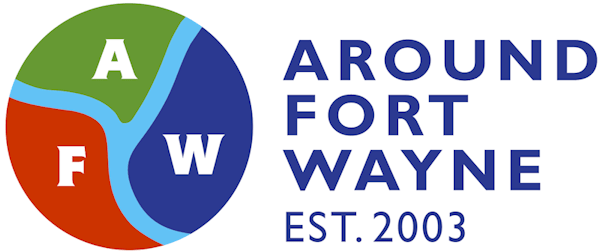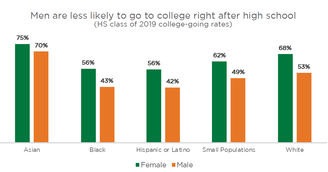
The fourth annual College Equity Report provides a deeper analysis of the performance of Indiana’s high school graduates and disaggregates data by race and ethnicity, socioeconomic status, gender, and geography.
New Report Reveals Equity Gaps in Indiana’s High School to College Pipeline for Students of Color, Low-Income Students, Male and Rural Learners
Indianapolis, Indiana (July 12, 2021) – Graduating high school students in Indiana have become more diverse and low-income over the past 10 years but are not equally prepared for the challenges of postsecondary education and are not succeeding at comparable rates, according to the new 2021 College Equity Report released today by the Indiana Commission for Higher Education.
The fourth annual College Equity report provides a deeper analysis of the performance of Indiana’s high school graduates and disaggregates data by race and ethnicity, socioeconomic status, gender and geography (rural and non-rural). The new data reveal that while some equity gaps have closed, several student groups are less likely than their peers to be ready for and to complete college, including students of color, low-income students, males and rural learners.
“The Commission defines educational equity as the idea that life’s circumstances or obstacles should not dictate the opportunity to succeed. This has long been a driver for the Commission and it’s why we created the first Equity Report in 2018,” said Indiana Commissioner for Higher Education Teresa Lubbers. “We must shine a light on the disparities that exist so that we can create sound and data-driven policies to help close the gaps that are holding too many Hoosiers and Indiana back.”
Indiana adopted its “Big Goal” in 2012, that at least 60 percent of Hoosiers would have a quality degree or credential beyond a high school diploma by 2025. With less than four years to go, Indiana’s current educational attainment rate is about 48 percent.
“Without reversing the trends that some students more than others aren’t prepared for higher education or aren’t succeeding when they get there, we will not reach our goals of increasing educational attainment and providing economic mobility for Hoosiers,” Lubbers said.21st Century Scholars are closing gaps
The students who are closing many of Indiana’s equity gaps are those in the state’s early college promise program, 21st Century Scholars, which provides up to four years of college tuition for income-eligible students who complete certain requirements throughout high school and college.
In 2019, one out of 10 high school graduates was a 21st Century Scholar. Scholars are the most likely group to earn early college credit (82 percent compared to the statewide average of 63 percent) and to enroll in college (88 percent compared to the statewide average of 59 percent). There is virtually no gap in college-going rates by race and ethnicity for students in the program. Scholars are also more likely than their low-income peers to go to college and graduate. By the program’s design, almost all high school graduates who are eligible for the Scholars program stay in Indiana for college.
Over 44,000 Hoosiers have earned a college degree with the 21st Century Scholarship since its creation in 1990 and more than 100,000 students are enrolled in the program today (from 7th grade to college).
Other report findings
Black and Hispanic/Latino Hoosiers are more likely to come from low-income homes and are less likely than the average student to earn early college credit (dual credit or Advanced Placement) while in high school, enroll in postsecondary programs and complete college on-time at two- and four-year public institutions in Indiana.
Women are more likely to go to college than men (65 percent of women versus 51 percent of men), and the gender disparity tracks among all races and ethnicities.
Rural students are less likely to go to college than non-rural students (55 percent to 59 percent, respectively).
“These outcomes highlight the prevalent challenges we are facing, but also reveal the opportunities that exist for Indiana to create real change, too,” Lubbers said.
Data-driven recommendations
Equity is one of three priority areas outlined in the Commission’s fourth strategic plan, Reaching Higher in a State of Change, which offers numerous strategies and recommendations to close equity gaps. Some of those strategies are highlighted in the 2021 College Equity Report, such as leveraging the 21st Century Scholars program as one of the best ways to close educational equity gaps. Other recommendations included in the new report include:
Encouraging K-12 schools to support more students in pursuing an Academic Honors diploma (Indiana’s most rigorous diploma) and awarding fewer graduation waivers
Sustaining targeted outreach to Black and Hispanic/Latino learners to increase awareness of financial aid opportunities
Addressing the disparity in rural college-going rates by partnering with community organizations and the Indiana Department of Education to advocate for the growing need for education beyond high school
Providing and funding dual credit opportunities for all students and encouraging teachers to become fully credentialed to teach early college credit
Working with the Indiana Department of Education to help streamline and smooth transitions between K-12 and postsecondary education
Read the full 2021 College Equity Report at https://www.in.gov/che/college-equity-reports/.
Explore resources available to help students plan, prepare and pay for college at LearnMoreIndiana.org.
About Indiana’s College Equity Report
The Indiana College Equity Report is part of a series of reports provided by the Indiana Commission for Higher Education to clearly define Indiana’s progress preparing Hoosiers for college and the workforce. The reports help inform students, educators, families and policymakers. The report disaggregates data from the Commission’s College Readiness and Completion reports to highlight outcomes in Indiana for race and ethnicity, socioeconomic status, gender and geography. Data included in the 2021 report primarily come from the Indiana Commission for Higher Education, Independent Colleges of Indiana, Indiana Department of Education, National Student Clearinghouse, United States Census Bureau and Lumina Foundation. Read the full report at https://www.in.gov/che/college-equity-reports/ and all the Commission’s reports at https://www.in.gov/che/data-and-research/reports-and-analyses/.About the Indiana Commission for Higher Education
Created in 1971, the Indiana Commission for Higher Education plans, coordinates and defines Indiana’s postsecondary education system to align higher learning with the needs of students and the state. The Commission also administers Indiana’s financial aid programs, including the 21st Century Scholars early college promise scholarship, which celebrated 30 years in 2020. Learn more about the Commission’s Reaching Higher in a State of Change strategic plan at www.in.gov/che.
Return to the AroundFortWayne home page.
















